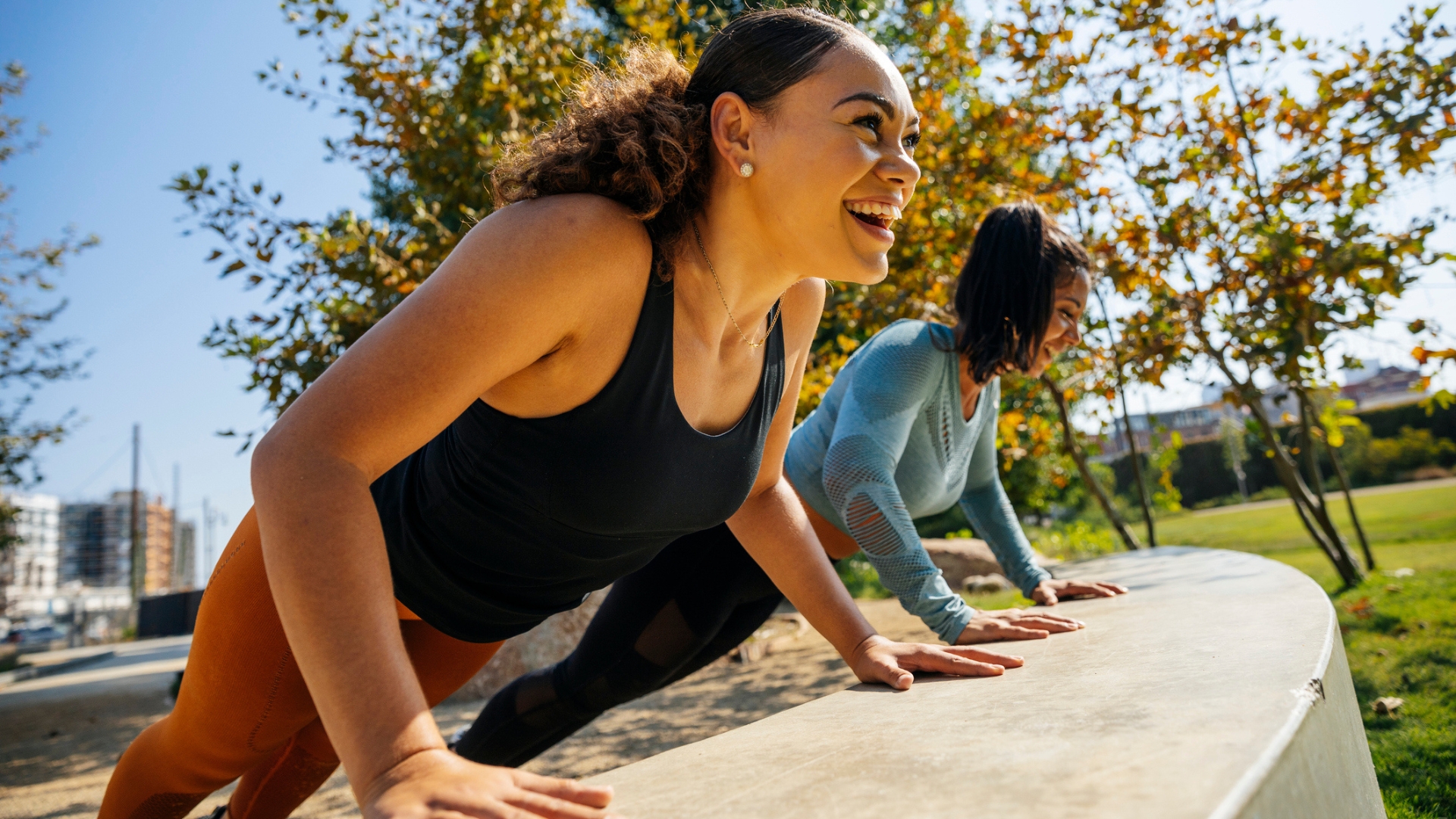The beginner-friendly modified push-ups that will help you finally master the full move in no time
A trainer explains why these regressions are just as effective as the full movement

You'll often see push-ups included in upper-body workouts, but if you can't do a push-up don't worry, you're not alone. Even though pretty much everyone knows how to do push-up, it's a move that requires a significant degree of strength in a range of muscles, including the chest, triceps and core.
But just because you're still developing the strength to do your first push-up, it doesn't mean you should write push-ups off altogether.
Alasdair Nicoll, a personal trainer at The Fitness Group, explains that anyone can—and should—be doing modified push-ups if they can't do the full version yet.
"If you don't have a lot of equipment, a push-up variation is going to be a really good exercise, especially if you are just starting out," says Nicoll.
A strict push-up involves touching your chest to the floor from a high plank position, then pushing back up to the high plank.
If you can't do this, the solution is to bring the surface closer to your body. "When you do a push-up against a raised surface, you're not fighting gravity as much, which means you're able to focus on form and technique and start to engage the chest and triceps, while practicing that motion," says Nicoll.
As the range of motion is also the same, you'll reap all the benefits of a push-up such as strengthening your chest, triceps and core, so you can eventually work towards a full push-up.
Start your week with achievable workout ideas, health tips and wellbeing advice in your inbox.
Three modified push-ups
The push-up modifications below progressively get more difficult as you have to fight more against your bodyweight. "Once you've mastered the motion, you can start to add the resistance element," he says. "Start to walk lower down the wall so you're training the muscles under load, which is what you need to do in order to build strength."
Complete as many reps as you can, up to 10 reps, the first time you try a modification. If you stop at, say, six reps, try for seven in your next workout. Continue in this vein, gradually adding an extra rep in each subsequent workout until you can confidently perform 10 reps with good form. Then move on to the next progression.
1. Wall push-up
This is the most beginner-friendly modification and it's great if you've never attempted a push-up before or are new to strength exercises. Don't be fooled into thinking it's too easy to hold benefits. My colleague tried wall push-ups every day for a month and they gained a stronger core and improved their push-up form.
- Stand facing a wall, arm's-length away, with your feet shoulder-width apart. The further away you stand from the wall the harder the exercise will be.
- Place your hands flat on the wall a little wider than shoulder-width apart at chest height. Your fingers should point upwards or slightly outwards.
- Lean your body forward so your weight is in your hands.
- Engage your core and, keeping your body straight from head to heels and your feet flat on the floor, slowly bend your elbows to move your body as close to the wall as you can. Keep your elbows close to your body or slightly flared out.
- Push through your palms to extend your arms and return to your starting position.
2. Incline push-up
The next modified push-up involves creating a little bit more distance between your chest and the surface you're pushing toward. Nicoll recommends using a box if you're training at a gym or a chair or table if you're at home.
- Find a sturdy surface that won’t move during the exercise. The higher the surface, the easier the exercise will be.
- Place your hands on the edge shoulder-width apart.
- Step back so your body forms a straight line from your head to your heels, and your shoulders are above, or just behind, your wrists.
- Engage your core and bend your elbows to slowly lower your chest towards the box.
- Push through your palms to extend your arms and return to your starting position.
3. Knee push-up
Once you've mastered the above variations, you can try doing a push-up on the floor. But if you aren't quite able to do it from the high plank position, keeping your knees on the floor can help to support your weight.
- Kneel on the floor with your knees slightly apart.
- Place your hands on the floor, shoulder-width apart, with your wrists directly under your shoulders and your arms extended. Your body should form a straight line from your head to your knees.
- Bend your elbows to slowly lower your body towards the floor.
- Push through your palms to extend your arms and return to your starting position.
Alice Porter is a freelance journalist covering lifestyle topics including health, fitness and wellness. She is particularly interested in women's health, strength training and fitness trends and writes for publications including Stylist Magazine, Refinery29, The Independent and Glamour Magazine. Like many other people, Alice's personal interest in combining HIIT training with strength work quickly turned into a CrossFit obsession and she trains at a box in south London. When she's not throwing weights around or attempting handstand push-ups, you can probably find her on long walks in nature, buried in a book or hopping on a flight to just about anywhere it will take her.

